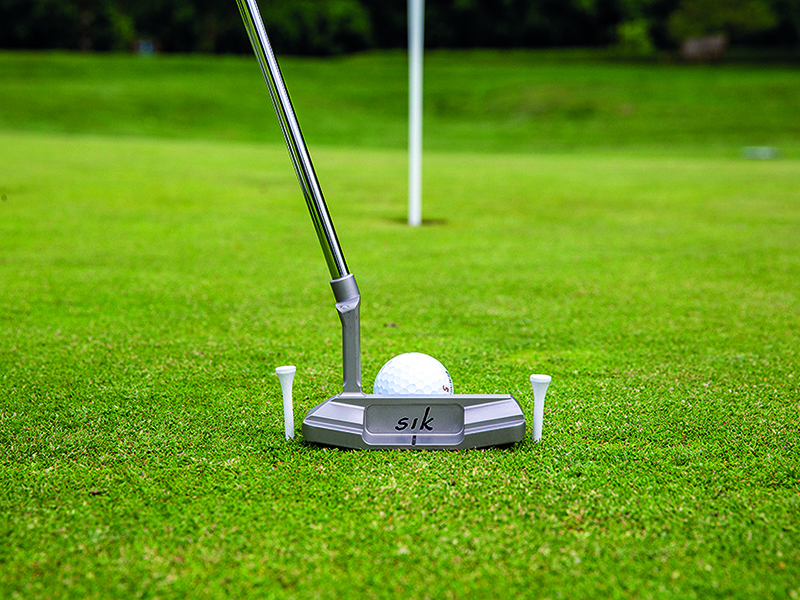
Putting is arguably the most crucial area of the game, but without the right putting tips and practice drills you might not be reaching your full potential on the green. Every putt you face on the course can be broken down into three fundamentals – the line, the speed and the read.
To put it simply, you have to read the putt to accurately identify your desired line and speed, and you need to be able to start the ball on your intended line, with a ball speed that matches your intention. You can practice all of these skills on some of the best putting mats on the market, or at your local practice putting green, but putting in the work is the only way to see positive results on the course.
This article, from Golf Monthly Top 50 Coach James Jankowski, outlines some great ways to improve your putting...
Start The Ball On Line
Changing your eye position (over the ball, inside or outside) and head position (head tilt and neck bend) can change your perception of what is straight. For many, left eye over the ball, head tilted square and eyes looking directly at the ball is a good position.
Aim is crucial to consistently holing short putts and you can check this with alignment sticks. Place one stick aiming at the dead centre of the hole and position another perpendicular to that.

Now take your set up and set your putter head right up against the stick square to target. If it feels open or closed, that will show you what a square putter face should look like.
Are there any references on the putter that look square? The leading edge? The lines? Pay attention to them. If you want to hit putts, simply replace the stick with some tees to reference square and fire away.
Strike location and face control will also influence the line your ball starts on. A good drill to ensure you’re striking the ball out of the centre of the clubface is to set up a gate with two tees just slightly wider than the width of your putter head and hit the ball from the middle of the gate (image below).

Put a mark or push a tee right into the ground in the dead centre of the gate so the ball is always in the right place. If the putter head passes through the gate, the ball will come out the centre of the clubface.
Dr Paul Hurrion’s research has shown that when the putter has the centre of gravity further from the face (a mallet), an off-centre strike will have more impact on direction but less on speed. If the centre of gravity is closer to the face (a blade), an off-centre strike will have more impact on speed and less on line.
Once you’ve mastered that, add an extra gate for the ball that’s a putter grip length ahead of the first gate, and the width of the short side of a credit card. Don’t push the tees in too far or the top of them will catch the ball. If you hit the ball through the second gate, you’re starting it within a degree of your intended start line.
Control Speed With Backswing Length
Your stroke should take the same, or a very similar, amount of time no matter how long it is – from holing out a short putt right up to a long lag putt. The longer the backstroke is, the faster it needs to be.
It should take the same amount of time to go from address to the end of the backswing, and then from there to the finish. Stroke time can vary from golfer to golfer, but should be very similar for that golfer across all putts.

Measure how far the ball rolls out with different backswing lengths at that consistent tempo. Hit a few putts with a specific backswing length at a specific tempo and take the average of how far the ball rolls. Repeat this for a variety of backswing lengths and you’ll find it much easier to control your speed and distance.
Your through-swing should ideally be the same length as your backswing, but don’t worry if it’s a little shorter. The putter should feel heavy through the ball because you’re not applying any force to it – that means it’s a stroke rather than a hit.
Visualise The Break And Speed
A lot of people decide on their start line without painting a picture of the curve of the putt in their mind. Wherever you look at the putt or whether you use your feet to judge the slope, it’s all with the end goal of trying to create an image of the path of the ball to the hole. Base your start line on the curve you think the ball will take, rather than aiming at an arbitrary distance outside the hole.

Picture the curve and put something like a ghost hole or tee down about two-thirds of the way to the hole – a point you think the ball will roll over to go in. Figure out if that’s the right spot by rolling the ball over it and seeing if it goes in or near the hole, then work out what enables you to start the ball on line to roll over that spot consistently. That could be a line on the ball, picking a spot on the green a foot or two in front of the ball or simply visualising the full curve of the putt.







